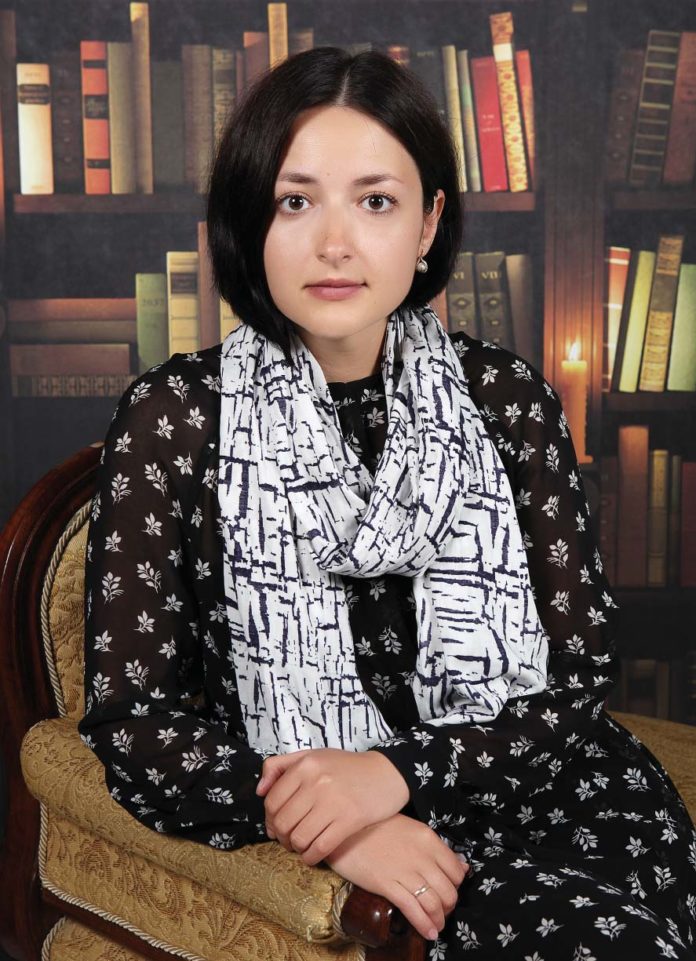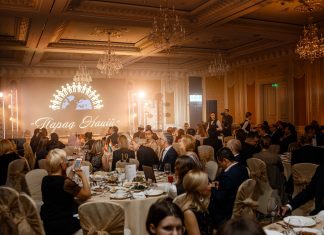The National Bureau of the Creative Europe Program will closely cooperate with the Ministry of Culture of Ukraine in 2018, with relevant departments of local and regional state administrations in order to realize appropriate events dedicated to the Year of Cultural Heritage.
2018 was declared as the Year of Cultural Heritage in Europe and as the Year of Cultural Heritage in Ukraine.
We are talking with the head of the National Bureau of Creative Europe Program in Ukraine, Julia Fediv in order to get to know how the common Year of Cultural Heritage in Ukraine and Europe will be realized, what does the National Bureau of the EU program Creative Europe in Ukraine deals with and what are the conditions for EU grants to preserve the Ukrainian cultural heritage.
Please tell us about the direction of «Culture» of the Creative Europe program. Who initiated affiliation of Ukraine with this program?
– This project cannot be considered as something separate, because “Creative Europe” has two main directions – culture and media – and they are interconnected. They are two components of the same program. The Creative Europe program is one of the programs of the European Union that has existed since 2014; Ukraine joined it in 2016 by the initiative of the Ministry of Culture that was interested in the participation of our country in the program. After negotiations with the European Commission since January 1st 2016, Ukraine had joined the program “Creative Europe” – including the direction “Culture”. If in the “Culture” subprogram, Ukrainian organizations can join all competitions thus in the Media sub-program only four contests are available for us. Participation of Ukraine in the program “Creative Europe” during the first two years was free of charge. More precisely, the contribution was one euro for our state. For Ukraine, an exception was made in connection with the socio-political situation, because, in fact, membership in the Creative Europe program is payable. Different contributions are set for each country. There is a special formula that takes into account GDP per capita, country size, population, etc. Based on these socio-economic indicators, the amount of the contribution is deducted. Therefore, in the first two years, we had a symbolic contribution of one euro. Since 2018, we will pay for the formula that I mentioned and our contribution will be about five hundred thousand euros. We are ready to pay these funds and we are ready to continue our membership in “Creative Europe” until 2020.
 What is the political significance of your project? If it were not such a powerful move of our country towards the EU, would it have been possible? Is there a political component in the project?
What is the political significance of your project? If it were not such a powerful move of our country towards the EU, would it have been possible? Is there a political component in the project?
– I think that’s right, because any country, not only from Europe, can join the program “Creative Europe”, unless the conditions for its participation will differ. The program’s main goal is the problems related to culture, not only in Ukraine, but also in Europe. Unlike the problems of education or science, the problems of culture remain a bit in the shade. In vain, of course, but we could join the “Creative Europe” and on our own initiative, as if we would have paid the full input from the very beginning. Among the states of the Eastern Partnership, besides Ukraine, Moldova is a member of the Creative Europe and Georgia. At the moment, talks are ongoing with Armenia that also filed an application. However, I have to agree, politics and culture are interconnected and cultural diplomacy is just a combination of cultural and political activity.
What were the criteria for the selecting of the participants for the direction of the “Support for European cooperation projects”?
– In fact, there are four criteria for evaluating the project application. If we take “Support for European cooperation projects” than for each of the evaluation criteria you can get from twenty to thirty points, in general, you need to get a hundred points. The first criterion is the innovation of the project itself, not only in the context of the cultural policy of a particular state, but also in the pan-European context. If the project is truly innovative, then you can get thirty points. The second criterion is the component of the productivity of the project. It’s about the professional level the team has, how effective is the experience of operating grants, how powerful is the experience of participating in similar projects, how experienced the team members are in the field of project management, whether they speak English, whether you have the powerful PR strategy. For this, also, there are thirty points. The third criterion is the communication strategy of the project, for which there are twenty points. It deals with the understanding of the appropriateness of the project in the information sphere. It is taken into account whether a web resource (bilingual or triple lingual) on a project topic will be created. Also, it’s important to write about this project in the media. The fourth criterion, which also includes twenty points, relates to the capacity of the project authors to be able to communicate with their partners – once again in the information field.
In general, more than 60-70 projects per year get the funding within the framework of European cooperation. Projects are evaluated by experts. There is a pool of about 12 thousand experts from different countries. Initially, the application comes directly to Brussels, where it is considered by the Executive Agency of the European Commission for Education, Culture and Audiovisual Affairs; it identifies two different experts in two different countries in the areas related to the project. Experts read in parallel, evaluate the application in parallel and then send their feedback to the Commission. The Commission calculates the average score and sends either a negative or positive answer on the basis of it.
The «Astrolabe Publishing House» that publishes such interesting but controversial authors such as Nietzsche, Conrad, and Tolkien, has won the Contest “Artistic Translations” in Ukraine. Could you tell us a little more about this competition?
– The competition “Artistic translations” involves the popularization of European fiction. Therefore, all the countries of the “Creative Europe” can apply for the translation of European literature in their own language, in our case; the national language is Ukrainian, of course. The conditions foresee translation from three to ten books and only artistic. You can translate these artistic works into Ukrainian from any of the European languages. It is possible to translate Ukrainian literature into European languages, but only the four most common ones – English, German, French, and Spanish. Such restrictions are dictated by the fact that Ukrainian is not one of the languages of the European Union. Thus, there are two directions: to take from three to ten works of European authors and translate them into Ukrainian or it can be taken from three to ten works by Ukrainian authors and translated into one of the four previously mentioned languages. Financing covers up to one hundred thousand euros for translation, but “Creative Europe” does not finance the translation process by one hundred percent. We pay only 60 percent, 40 percents must be found by competitors.
2018 was declared as the Year of Cultural Heritage in Europe. Which measures in this regard are planned by Creative Europe Ukraine?
– In general, this is not only the Year of the European Cultural Heritage. This year was declared as the Year of Cultural Heritage in Ukraine, also. Therefore, our national bureau will work closely with the Ministry of Culture of Ukraine, with the relevant departments of the local and regional state administrations, to realize appropriate events dedicated to the Year of the Cultural Heritage.
Also, we will cooperate with the Delegation of the European Union in Ukraine. In November 2017, we have already held the first joint event dedicated to the proclamation of the Year of Cultural Heritage. This happened in Ivano-Frankivsk. Also, events dedicated to cultural heritage issues will be synchronized in Europe. In June 2018, such an event will be held in Berlin. We will be in constant contact with our Brussels office; we will invite foreign experts to Ukraine in order to raise issues related to the preservation of cultural heritage. Also, at the end of January 2018, we intend to establish an interdepartmental group with the participation of the employees of all relevant ministries and departments that have direct or indirect connection with the preservation of the national cultural heritage. Also, we are going to invite the parallel experts from the Council of Europe and UNESCO and to develop a plan of the measures not only for this year, but also for the next year, because the problem of preservation of the cultural heritage, including in the occupied territories of the Donbas and in the Crimea, is an actual and painful one for Ukraine.
Of course, the issue of cultural heritage throughout Ukraine should not be forgotten. In many regional centers there are initiative community associations and public platforms that will take part in the Year of Cultural Heritage. The most active cities are not only in the West, but also in the East and the Center of Ukraine. There is certain passivity in the South, but we are making efforts to attract these regions to our activities. Ukraine is a real treasure of Europe and the world. And this treasure must be preserved.













